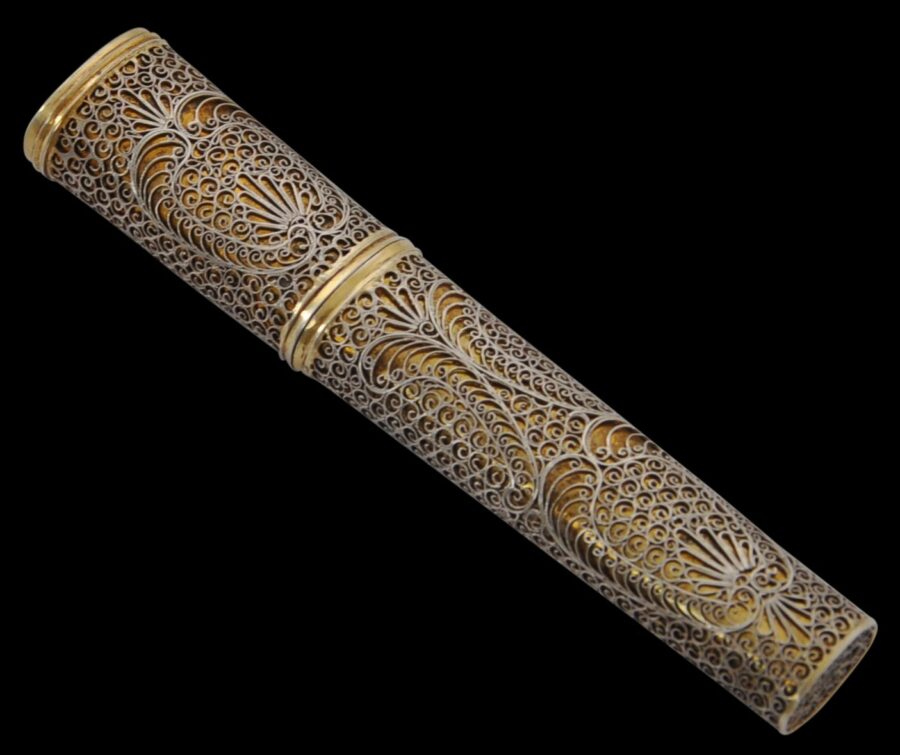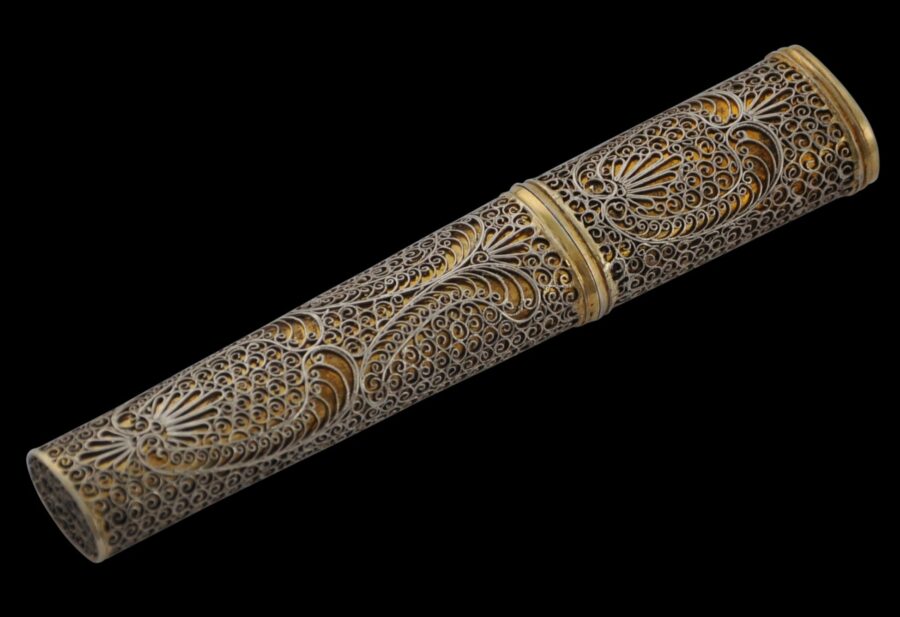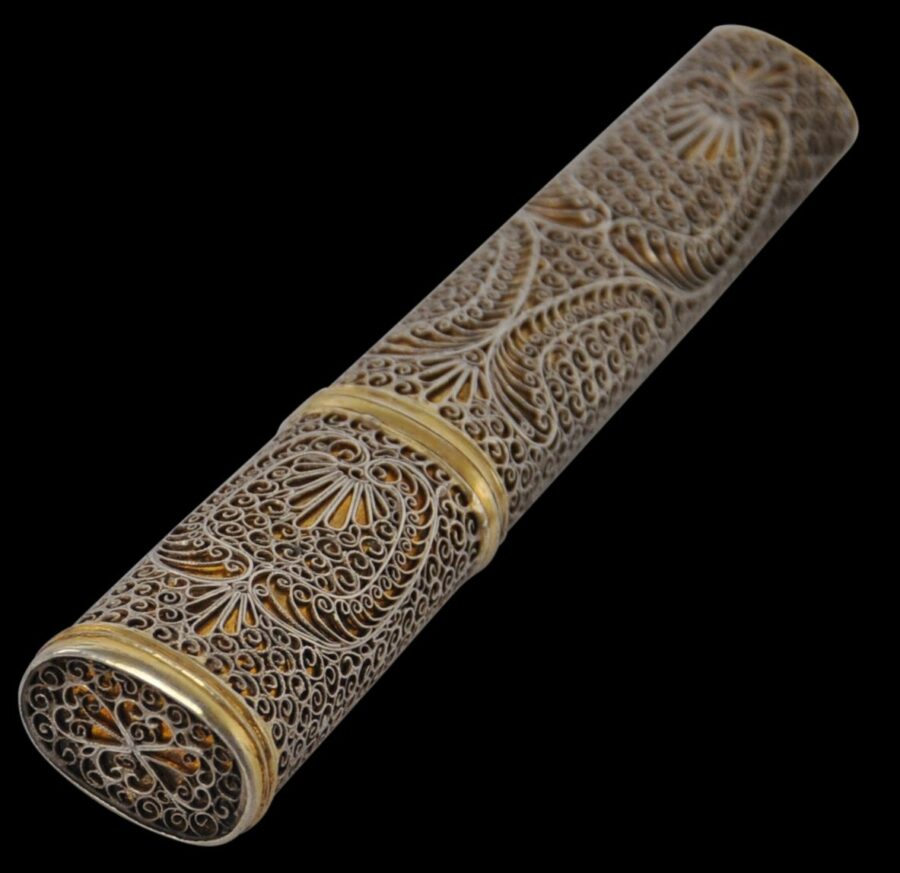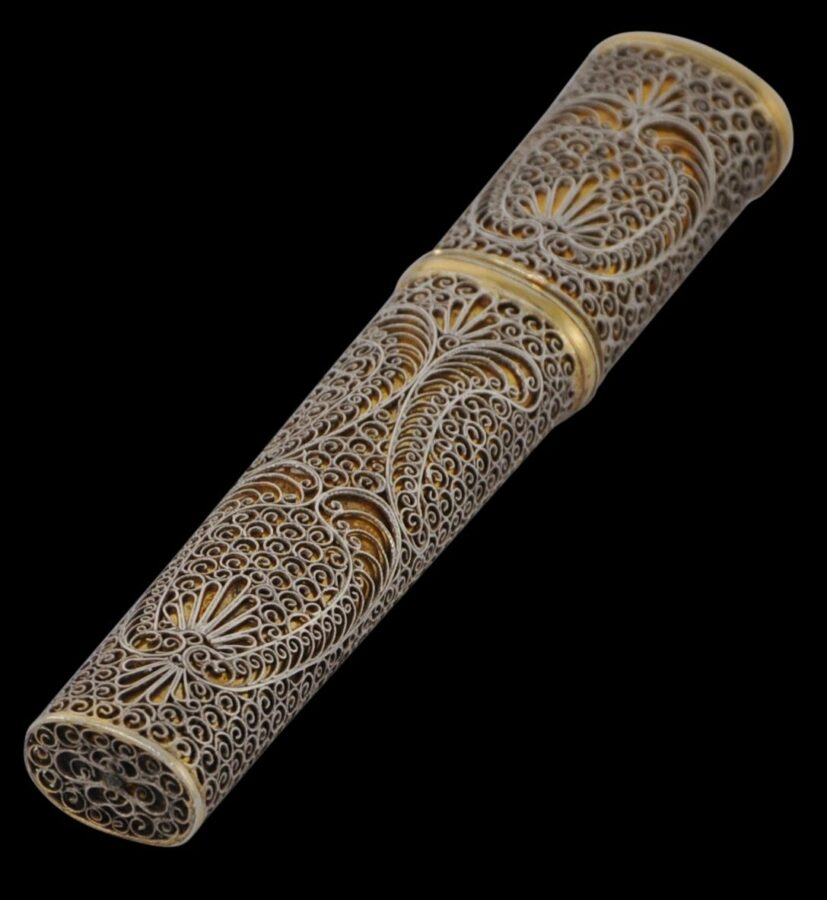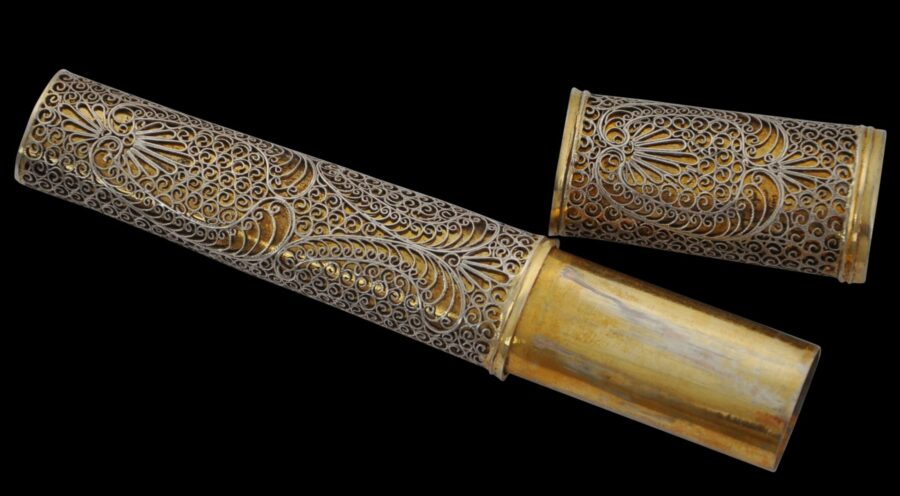This fine needle case with tapering sides is of fine gilded sheet silver over which silver filigree has been applied. It is a fine example of silver filigree work, most probably from southern China or the Dutch East Indies, possibly Batavia.
The whispy, stylised floral motifs of the filigree show Sumatran influence – perhaps it was made by an artisan who came from the Padang area on the west coast of Sumatra. Such filigree work was known in Batavia at the time as ‘Westcust werk’ (Veenendaal, 1995, p. 88).
Items such as these were commissioned by the Dutch East India Company (VOC) in the eighteenth century for export to Europe and for use by VOC officials and their families themselves. Probably this case was intended as a needle case for a VOC official’s wife or for export to Europe. Embroidery was a preferred past-time for many well-to-do eighteenth century European wives.
This example of a filigree needle case is in excellent condition. All the filigree is intact and the gilding is still bright.
References
Gelman Taylor, J., The Social World of Batavia: Europeans and Eurasians in Colonial Indonesia, 2nd ed., The University of Wisconsin Press, 2009.
Haags Gemeentemuseum, V.O.C. – Zilver: Zilver uit de periode van de Verenigde Oostinische Compagnie 17de en 18de eeuw, 1983.
Voskuil-Groenewegen, S.M. et al, Zilver uit de tijd van de Verenigde Oostindische Compagnie, Waanders Uitgevers, 1998.
Zandvlieyt, K. et al, The Dutch Encounter with Asia 1600-1950, Rijksmuseum Amsterdam, 2002.


